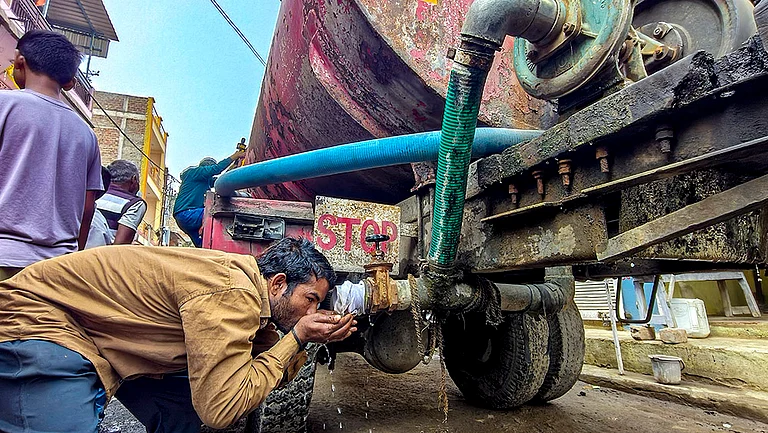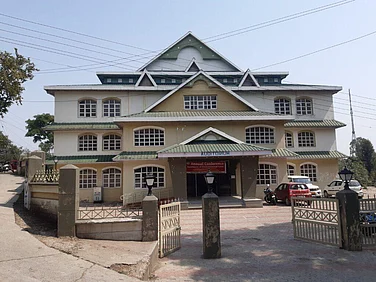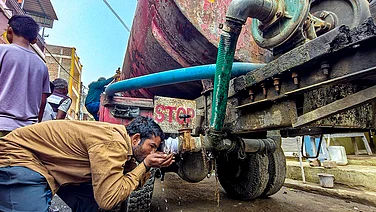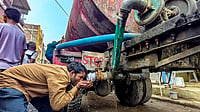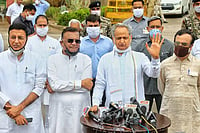The inquiry by the Commission of Railway Safety (CRS) has found that multi-level lapses led to the train tragedy at Odisha's Balasore that killed 275 and injured over 1,000.
The CRS report said that there were lapses in the signalling and telecommunications (S&T) department. It also flagged lapses in repair work carried out near the site of the accident that damaged the underground wiring.
Moreover, the CRS noted that the Odisha train accident could have been prevented if corrections actions were taken after similar incidents in the past. Notably, reports had highlighted that officials had previously flagged flaws in the signalling system earlier and Balasore-like accidents had also been reported — though the scale of those accidents was nowhere close to that in Balasore.
Here we explain what we know of the Odisha train tragedy and what the CRS report has found.
What do we know of the Odisha train tragedy?
On June 2, a triple-train accident at Bahanaga Bazar station in Odisha's Balasore killed 292 people and injured over 1,000.
First, the Chennai-bound Coromandel Express crashed into a goods train. Then, some of its coaches derailed and hit the last two coaches of the Bengaluru-Howrah train that was running on the adjacent tacks. Some coaches of the this train also derailed.
As to what led to the crash of Coromandel Express into the stationary goods train, the Associated Press earlier reported Jaya Verma Sinha, Member of Operation and Business Development, Railway Board, as saying that, as per preliminary investigation, the train was given the signal to run on the main track line, but the signal later changed. The train followed this changed signal and entered an adjacent loop line where it crashed into the goods train.
The top officials also said the trains were not over-speeding and there was no driver-error in the accident.
The possibility of the sabotage was also raised after the Odisha train tragedy. Besides the Commission of Railway Safety (CRS), the Central Bureau of Investigation (CBI) is also probing the incident.
The three angles of investigation are expected to be sabotage, system failure, and repair work near the site of the accident damaging the system that led to the accident.
What has the CRS report found?
The Commission of Railway Safety (CRS) is the central government entity that looks into railway safety and investigates railway incidents. It is under the Ministry of Civil Aviation to separate it from the Railways in order to maintain its independence from the Railways.
While the CBI is looking into the Odisha train accident, the CRS too carried out a probe. In its report, it has flagged multi-level lapses that led to the accident.
The CRS report found "wrong signalling" to be the main reason and flagged "lapses at multiple levels" in the signalling and telecommunication (S&T) department, according to PTI, and added that it could have been prevented if corrective measures were taken after red flags were raised earlier.
"Notwithstanding the lapses in signalling work, remedial actions could have been taken by the S&T staff if 'repeated unusual behaviour' of switches connecting two parallel tracks were reported to them by the station manager of Bahanaga Bazar, the spot of the accident," reported PTI, citing the CRS report.
The report also said that the station-specific approved circuit diagram was not provided for repair-work near the site of the accident that was a "wrong step that led to wrong wiring", reported PTI , adding that a team of field supervisors modified the wiring diagram and failed to replicate it.
This repair-work had been flagged earlier as well. Earlier, CNN-News18 reported, "The boom barrier here had malfunctioned and the railway staff was fixing the same to allow safe passage of the passenger trains. However, the suspicion is that a 'shortcut job was done in a hurry' on the location box at the level crossing with the systems here, that need up disturbing the electronic interlocking system, sources say."
The report also said that there a similar incident on May 16, 2022 at Bankranayabaz station in Khargpur Division of South Eastern Railway, on account of wrong wiring and cable fault, but no corrective action was taken.
"Had corrective measures been taken, after this incident, to address the issue of wrong wiring the accident at BNBR would not have taken place," the report said, as per PTI.
This too had been flagged previously. Earlier, The Print reported that a senior official had previously flagged serious flaws with the system, but corrective actions were not taken. In a letter dated February 9, as per The Print, the principal chief operating manager of South Western Railway zone mentioned an incident and said it indicated "serious flaws in the system where the route of dispatch gets altered after a train starts on signals with correct appearance of route in the SMS panel. This contravenes the essence and basic principles of interlocking".
The incident mentioned in the letter was an "everted head-on collision with a down goods train" of Sampark Kranti Express at Hosadurga Road station of Birur-Chikjajur section of Mysore division on February 8, according to The Print.
In its conclusion, the report said that rear-collission was due to the "lapses in the signalling-circuit-alteration" carried out at the north signal 'goomty' in the past and during the execution of the signalling work related to the replacement of electric lifting barrier for level crossing gate 94 at the station, reported PTI.
"These lapses resulted in wrong signalling to the train no. 12841....resulting in the train 12841 traversing on the UP loop line, and eventual rear collision with the goods trains standing there," said the report.
The CRS has recommended that a drive should be launched to update the completion signalling wiring diagrams, other documents and lettering of signaling circuits at site, said the report.
Standard practices should be followed for carrying out signalling-modification work, PTI cited the report as saying, adding that the CRS report has also said that any alteration to signalling circuits should be carried out with an approved circuit diagram and in the presence of an officer.
"It also suggested a separate team should be deployed for checking and testing of modified signalling circuits and functions before restoration and reconnection of the work," PTI further reported.







